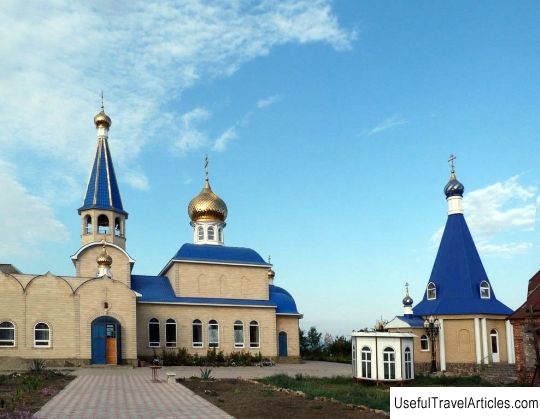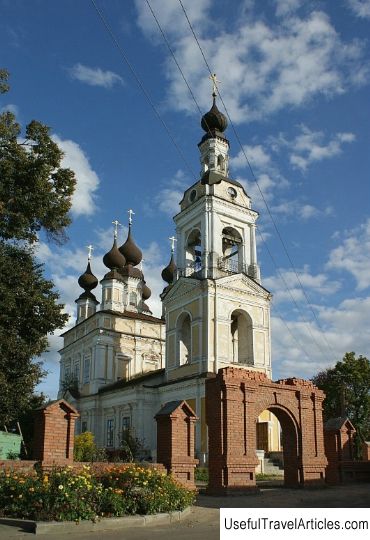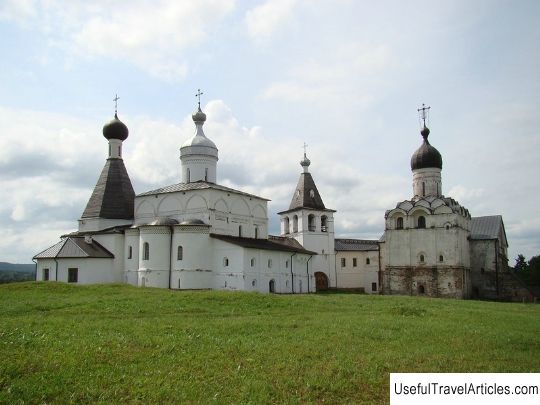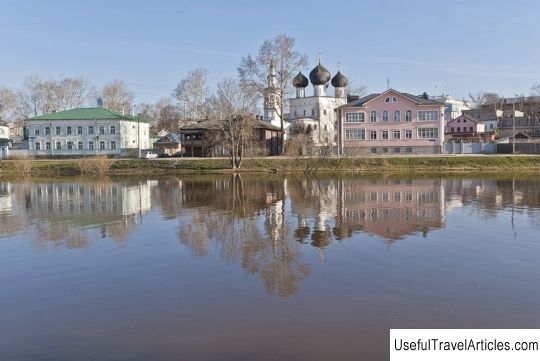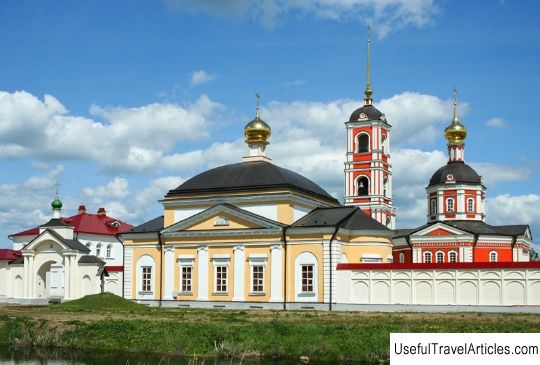Vvedenskaya church description and photo - Russia - North-West: Vologda
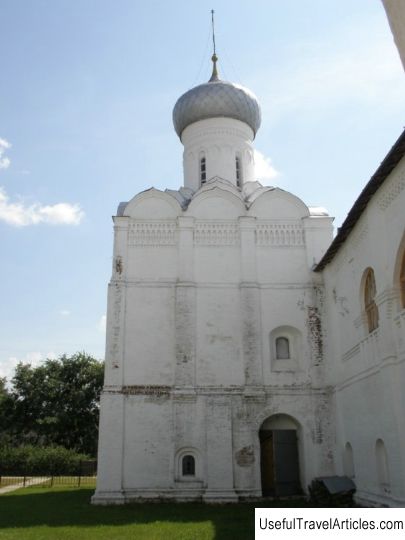
Vvedenskaya church description and photos - Russia - North-West: Vologda. Detailed information about the attraction. Description, photos and a map showing the nearest significant objects. Photo and descriptionThe Vvedenskaya church is a one-domed two-story building with a large refectory. The exact time of the construction of the temple is unknown; judging by the monastery inventory dating back to 1623, the church is listed as stone. The church iconostasis with icons was built in 1781. In the refectory of this church, there is a chapel in honor of the Holy Great Martyr Barbara, in the iconostasis of which there are icons that were donated by the Trinity-Gerasimov Church. The covered stone gallery, built in 1623, is a link to the cathedral church. In the 16th century, two-tier covered passages were made with a pair of passable arches at the bottom and wide arched openings at the top. It is they who connect the Savior Cathedral with the building exposed on the basement, which includes the refectory, the ancient abbot's chambers. It is believed that the structure appeared in the second half of the 1540s. The most important part of this significant building is considered to be the refectory chamber, the basement floor of which is occupied by bread, cellars, and other utility rooms. On the top floor there is a spacious, vaulted one-pillar chamber for communal church meals. The refectory facades look especially strict, laconic and dignified. In this case, everything is built on a clear rhythm of spacious arched niches, in which large window openings are placed, as well as simple blades at the corners of the volume, which ends in the form of a jagged cornice. An important impression is made by a huge square-shaped hall a refectory room with an imposing pillar in the central part, which supports massive vaults. The refectory is illuminated by dim daylight, which penetrates through the window openings in the western and southern walls and amazes with a peculiar spatial expressiveness and laconic forms. This kind of refectory chambers are especially typical for monastery construction in Russia in the 16th centuries, especially for large monasteries. The small Church of the Introduction, adjacent to the refectory, looks very elegant. It is this church that attracts attention with its pyramid, made of three tiers of keeled kokoshniks and topped with a drum and a bulbous cupola. The characteristic shape of the church, made in the form of a slender cubic volume, which is almost completely devoid of altar apses. This type of apseless temple, which is part of the refectory buildings, is characteristic of the 16th century. The straight eastern facade of the church, however, like the others, it has ledges with profiled plinths at the level of the basement, blades in the center of the walls, and kokoshniks at the end of the bed. Between the shoulder blades, under the kokoshniks, there is a patterned wide belt, which consists of a curb, rectangular niches, and brick balusters. This ornamental frieze is echoed by a similar decor in the upper part of the temple drum, located next to the keeled arches. This kind of decorative motives are exactly identical to the decoration of the heads of the Spassky Cathedral, as well as the gateway temple of the Ascension. The Vologda craftsmen, under the leadership of the architect G.P. Belov, carried out scientific restoration work related to the renovation, related to the reconstruction of the Vvedenskaya Church, as well as the refectory chamber, during 1955-1959. At the same time, constructive strengthening of foundations and buildings was carried out, deep restoration of the basement and vaults of the refectory was carried out, door and window openings were restored, the roofing system and stone tongs were made of wood. The facades of the refectory were whitewashed. The Church of the Introduction again acquired the system of crowning kokoshniks; The temple dome was significantly strengthened, the head of which was covered with sheet zinc. The windows of the church, from the side of the eastern wall, were to be restored; new floors were laid in the basement, and interior restoration was carried out on the second floor of the temple building. The Church of the Introduction again acquired the system of crowning kokoshniks; The temple dome was significantly strengthened, the head of which was covered with sheet zinc. The windows of the church, from the side of the eastern wall, were to be restored; new floors were laid in the basement, and interior restoration was carried out on the second floor of the temple building. The Church of the Introduction again acquired the system of crowning kokoshniks; The temple dome was significantly strengthened, the head of which was covered with sheet zinc. The windows of the church, from the side of the eastern wall, were to be restored; new floors were laid in the basement, and interior restoration was carried out on the second floor of the temple building.       We also recommend reading House-crescent (Crescent) description and photos - Great Britain: Buxton Topic: Vvedenskaya church description and photo - Russia - North-West: Vologda. |
